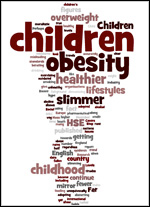Sweet nothing
Many of our regular bulletins focus on news stories that generate unwarranted fears and anxieties. They urge us to believe that the world in which we live is a VERY DANGEROUS PLACE. We should really stay at home – except that is where most ACCIDENTS happen. Our food is full of CHEMICALS – well what else could it be full of? – and eating anything these days is so hazardous that it is probably best just to leave it on the plate – except then we would DIE. And so on …
By way of a change then, let's look at the other side of the coin of media distortion – those stories that are so ridiculously Pollyannish that they lead us to believe, falsely, that a major BREAKTHROUGH has been achieved in some medical field, or that MIRACLE CURES are just around the corner. In the regional paper that brought us Raymond Blanc's diatribe against sugar 'It's a Diet of Danger' - see Blanc Sour – we now discover an equally misleading story that would have us believe that 'A spoonful of sugar may help beat cancer cells'. The culprit is the Manchester Evening News whose editorial staff, it seems, have scant regard for even the most basic principles of accurate science and health reporting.
The article by Rebecca Smith concerned research conducted at the Paterson Institute in Manchester on the effects of certain molecules on lung cancer cells under laboratory conditions. The molecules tested were heparin oligosaccharides, and they seemed to limit the development of blood vessels feeding the tumours and thereby prevent their growth. Further work on real patients is, of course, still required. But it is promising.
The problem with the story, however, was that half of the column inches accompaning the misleading title in the print edition were devoted to a picture of a spoonful of sugar cascading into a dish – suggesting that these molecules (complex sugars) are in some fundamental way like the crystals that we ordinarily use at home. They most certainly are not, and to suggest that common sugar may conquer cancer is as seriously misleading as M. Blanc's earlier condemnation of sugar as acting like sandpaper on our artery walls.
To establish how far the molecules in the study are removed from every-day sugar we turned to those nice people at Neoparin Inc. who manufacture them. They say that:
"Heparin Derived Oligosaccharide is a group of compounds made from heparin by controlled deaminative cleavage and subsequent purification according to the degree of polymerization. Each oligosaccharide has a specific disaccharide unit of uronic acid -> anhydromannitol at the reducing end and various numbers of disaccharide units at the non-reducing end, depending on the size of the oligosaccharide."
I don't think that many of us would want to sprinkle these on our cornflakes.
In our Guidelines on Science and Health Communication – developed in conjunction with the Royal Institution and the Royal Society and endorsed by many leading bodies – we explicitly refer to this type of misleading coverage and recommend:
"When in doubt . journalists reporting medical advances should consider the effect of their report on a person suffering from the disease in question, or on a relative or close friend affected by the disease."
Suggesting to people suffering from potentially terminal diseases that they may find new hope in a teaspoon of sugar is a cynical disregard not only for the facts but also for their suffering and anxieties.
Peter Marsh
9 April 2003





